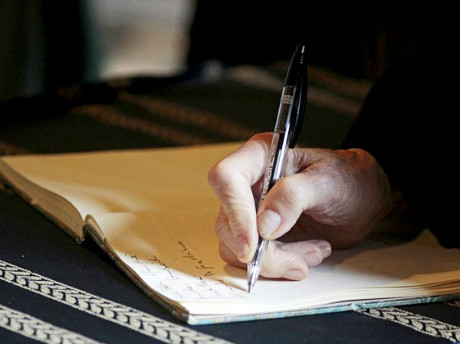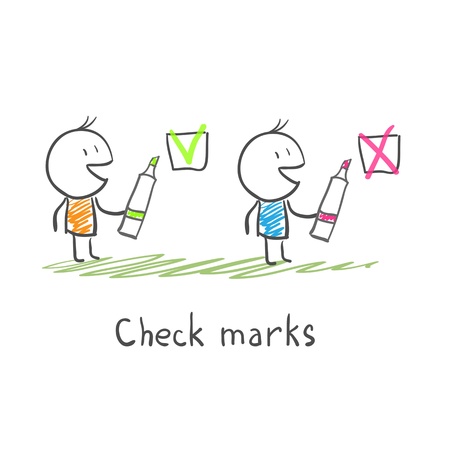SAT写作官方样题考生范文:Why Literature Matters(7)
- 2017年04月26日14:33 来源:小站教育作者:小站SAT编辑
- 参与(0) 阅读(7576)
本文给大家分享SAT写作样题“Why Literature Matters”的一篇范文,本文得分4 2 4,作文题目及更多分数段范文,请点击入口。
Sample 7 Scores: 4/2/4
From the very beginning of this passage, we can see that author, Dana Gioia, has a concern with literary knowledge declining; even the title shows his concern. Gioia uses evidence, reasoning, and diction to persuade us to agree with him on three points, that literary knowledge is declining, that literary knowledge is very important, and that consequences shall ensue if nothing is done about our apathy towards literature.
Gioia cites the 2002 Survey of Public Participation in the Arts on the fact that “arts participation by Americans has declined for eight of the nine major forms that are measured.” One percentage Gioia noted as particularly staggering was the decline in reading literature. Not only that, but Gioia also brings up that the Arts Endowment issued the reading portion of the survey as a seperate report. Since Gioia is mainly using facts in this key point, and not opinions, evidence is used instead of reasoning, however, he did use distinct diction. Stating that the findings in the study are not only ‘severe’, but also ‘worrisome’. Adjectives like this add more weight to his words.
Gioia’s next key point is just how important literature is. Gioia states that “the significance of reading has become a persistent them in the new business world,” and also cites multiple quotes buy Wired Magazine explaining how people with literary knowledge are better suited for the business world. That leaders seek “the ability to create artistic and emotional beauty” is more important than “linear, logical, and analytic talents”. Gioia even puts in a worker’s perspective from the 2001 National Association of Manufacturers poll. Evidence showed reading was the 2nd highest deficiency amongst workers, and that “38 percent of employers complained that local schools inadequately taught reading comprehension”. For reasoning, Gioia purposely used evidence that is very relative to the common man or woman, especially relative to younger Americans by saying “That individuals at a time of crucial intellectual and emotional development bypass the joys and challenges.” (notice how joys and challenges is said to further praise literature, and persuade the reader)...“of literature is a troubling trend,” again using diction to further persuade readers.
As a closing point, Gioia touches on the consequences of illiteracy. “The decline of literary reading foreshadows serious long term social and economic problems” That is Gioia’s main point on these consequences, and uses evidence in the previous paragraph to support it. Gioia mentions the surprising finding in “Reading at Risk” that literary readers are markedly more civically engaged than nonreaders. In his final paragraph, Gioia states that as we lose our literary intelligence “our nation becomes less informed, active, and independent minded”, and that these qualities we as a nation “cannot afford to lose.” These bold statements hammer in to the reader just how significant literature really is, in many different aspects of our life.
This persuasive passage used enough evidence, reasoning, and careful diction to not only make readers take a stance on literacy, but also provoke readers to take action on what he seemingly considers an epidemic that is truly detrimental to the nation.
This paper scored a 4/2/4.
Reading—4: This response demonstrates thorough comprehension of the source text. The writer briefly summarizes the main idea of Gioia’s passage (the author’s concern with literary knowledge declining) and includes an abundance of important details from the text through a mixture of appropriate quotations and paraphrases. Moreover, the writer exhibits an understanding of how details relate to Gioia’s main idea and how this interrelation creates meaning for the reader. For example, the writer points out how Gioia establishes that “the significance of reading has become a persistent them[e] in the new business world” by the author’s use of multiple quotes buy Wired Magazine. The writer then connects that information to a 2001 poll cited in the next paragraph of Gioia’s text (Gioia even puts in a worker’s perspective from the 2001 National Association of Manufacturers poll). The writer, then, shows understanding of how different details in Gioia’s text contribute to an understanding of the whole. The response is also free of errors of fact or interpretation. Overall, this response demonstrates advanced reading comprehension.
Analysis—2: The writer demonstrates a limited understanding of the analytical task and offers only an incomplete analysis of how Gioia builds his argument. The writer does identify some important rhetorical elements of Gioia’s text (evidence, reasoning, and diction) and attempts to describe how these elements function in the source text. However, these moments of analysis, all of which focus on Gioia’s use of diction, never move past assertions. For example, in the first body paragraph the writer identifies Gioia’s use of distinct diction (Stating that the findings in the study are not only “severe” but also “worrisome”) and then asserts that adjectives like this add more weight to his words. This pattern of assertion-based analysis continues throughout the response (These bold statements hammer in to the reader just how significant literature really is, in many different aspects of our life). Both of these examples illustrate some limited understanding of the analytical task. However, the writer never attempts to explain, for example, how or why these adjectives or statements persuade the reader or what effect Gioia’s diction has on his audience. For this reason, this paper demonstrates only partially successful analysis.
Writing—4: The writer demonstrates highly effective use and command of language in this cohesive essay. The introductory paragraph includes a precise central claim that lays out the rather complex structure of the response (Gioia uses evidence, reasoning, and diction to persuade us to agree with him on three points, that literary knowledge is declining, that literary knowledge is very important, and that consequences shall ensue if nothing is done about our apathy towards literature). The writer then constructs a tightly controlled response that demonstrates a deliberate and highly effective progression of ideas, both within paragraphs and throughout the response as a whole. For example, the second body paragraph (focused on Gioia’s claim that literary knowledge is declining) follows the three-pronged approach, set forth in the opening paragraph, of examining Gioia’s use of evidence, reasoning, and diction. Each paragraph stays on-topic while covering each of the three rhetorical elements of Gioia’s argument. The writer uses precise word choice (particularly staggering, consequences shall ensue, an epidemic that is truly detrimental to the nation) and a wide variety in sophisticated sentence structures. This response demonstrates a strong command of written English and is virtually free of errors. Overall, this response demonstrates advanced writing.

























